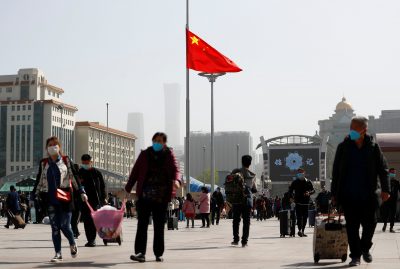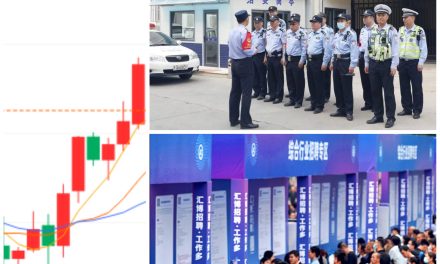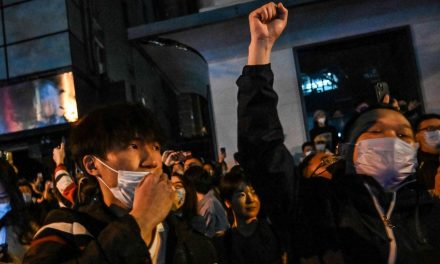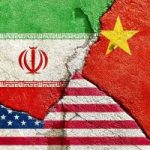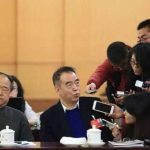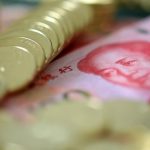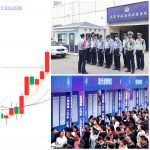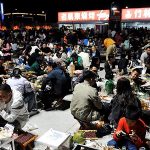By Cai ShenKun
Since the beginning of 2022, outbreaks of COVID-19 have occurred repeatedly across China. Now facing a mutated virus that is for most milder than a cold, cities nationwide have nonetheless maintained the old method of shutting everything down and requiring mass isolation and testing, as if the problem were still the novel coronavirus of the early days. The closures are and more thorough, required testing is more and more frequent, and, even more comically, during these severe lockdowns, the various national economic data released by the government nonetheless do not even look problematic. China’s epidemic-prevention policy has become generalized throughout the country, and the government even claims to be a model for the rest of the world.
What will China’s economy look like in the post-pandemic era? How real are public economic data? Is the country already facing a major crisis? And how can it actually escape its predicament? These economic questions are actually more difficult to deal with than the virus. The state of the economy affects everyone in the country, and so naturally attracts widespread attention from every sphere.
According to the latest official customs data released by the Chinese government on June 9, in May the country’s combined imports and exports were 3.45 trillion yuan, an increase of 9.6%. Exports alone increased by 1.98 trillion yuan, i.e. 15.3%, and imports increased 1.47 trillion yuan, or 2.8%. The trade surplus was 502.89 billion yuan, an increase of 79.1%. In US dollar terms, the total value of China’s imports and exports in May was $537.74 billion, an increase of 11.1%. Exports increased $308.25 billion or 16.9%, and imports went up $229.49, or 4.1%; the trade surplus was $78.76 billion, an increase of 82.3%.
“Generally speaking, in May the economy gradually overcome the adverse impact of the epidemic,” the National Bureau of Statistics said on its official website: “Faced with the complex and severe international environment and the severe impact of the domestic epidemic, under the strong leadership of the Party Central Committee under Comrade Xi Jinping, various regions and departments have effectively coordinated epidemic prevention and control and economic and social development, and focused on stabilizing the macroeconomy. Domestic epidemic prevention and control has generally improved, aggregate demand has gradually recovered, employment and prices have generally been stable, major indicators have improved modestly, and the national economy has improved overall. Recovery is on track.”
But in fact, in May electricity consumption in Guangdong, a major export province, has dropped significantly. According to data, from May 1-20, Guangdong’s unified electricity production was 38 billion kilowatt-hours, a year-on-year decrease of 16.87%! On May 20 in particular, total electricity was 2.633 billion kWh, which was only 80.89% of the amount for the same day last year. For observers of the Chinese economy, electricity consumption is often used to evaluate economic data, particularly when, as in China, questions have long been raised about the reliability of official macroeconomic data. What is the reason for the dramatic annual decline in Guangdong’s electricity consumption observed in May? At a time when Shanghai, Beijing, Northeast China and other places were hit hard by the epidemic, the epidemic in Guangdong was basically under control in May, and the impact on the economy should have been small. And in May, when the export data was so strong, the electricity consumption of the exporting coastal provinces still fell off a cliff, which couldn’t but make people doubt the authenticity of the export data.
And other data support the idea that the decline in electricity consumption indeed indicates economic problems. First, Internet companies such as Tencent have recently reported layoffs. In May, brick-and-mortar companies such as the appliance manufacturer Midea also began to lay off workers on a large scale. Many factories were running well under capacity or even closed. Taking the clothing industry as an example, most factories are concentrated in the Pearl River delta region, and now many factories are finding it difficult to obtain orders or have been closed outright, and electricity consumption has correspondingly decreased. Many orders in the upstream-processing segments of the industry that used to go to these factories are now flowing to Southeast Asian countries such as Vietnam and Indonesia, placing many domestic export-processing enterprises on the verge of bankruptcy.
And in post-epidemic China, consumption is sluggish. If the epidemic- prevention policy continues, it will be difficult for production in particular and life more generally to return to normal. According to data released by the National Bureau of Statistics, the total losses of industrial enterprises above a certain minimum size increased by 39.7% from January to April. The reported increase in industrial profits mainly comes from firms in coal, oil and related industries, and the substantial increase in the profits of these products is due to the substantial increase in prices for what they sell. The price of upstream products, products used in manufacturing other things, has also risen sharply, imposing heavy costs on mid-stream and downstream manufacturers, resulting in a decline in profits and increased losses for firms throughout the entire manufacturing sector.
From January to April of this year, inflation-adjusted total retail sales of consumer goods dropped by 1.6%. That is to say, from the perspective of retail sales of consumer goods, consumption is declining. At 12.9%, the decline in April was particularly large, and the decline in May was a further 6.7%. According to retail-sales statistics released by the Chinese Passenger Car Association, domestic passenger-car sales in May reached 1.354 million units, a year-on-year decrease of 16.9%, and the cumulative sales from January to May were 7.315 million units, a year-on-year decline of 12.8%.
Real-estate sales data, which are frequently released so as to support current prevailing policies, is even more problematic. According to the “Sales Rankings of China’s Real Estate Enterprises from January to May 2022” released by the real-estate-data firm China Index Holding on May 31, in the first five months of this year, sales for the so-called TOP100 real estate enterprises fell by more than 50% year-on-year. And average sales value was 27.39 billion yuan, average sales value discounted for the firm’s share of equity value in each project was 19.99 billion yuan, and the average firm sales space similarly discounted was 1.360 million square meters, down 50.7%, 51.5%, and 53.2% year-on-year respectively. According to other data in the same report, from January to May this year, the average cumulative sales for the year each month by these companies were 6.18 billion yuan, 10.30 billion yuan, 16.26 billion yuan, 21.22 billion yuan, and 27.39 billion yuan, a year-on-year decrease of 23.1% 34.0%, 47.2%, 50.2%, 50.7%, suggesting the sales decline was accelerating during this period.
Such a severe economic environment indicates some combination of Chinese consumers really having no money to spend, or being afraid to consume. It is hard to say the extent to which they really have no money to spend, but at a minimum their expectations about future income and therefore consumption possibilities have changed, which itself has direct implications for the Chinese economy. The two main current economic pillars of China, the automobile and real-estate markets, are both in terrible condition. Especially since the beginning of this year, policies that should be good for the real-estate industry have been introduced one after another. But the market has still not improved, and now mortgage loans too are in decline for the first time.
Provincial and local governments’ rapidly growing debt has also had a great impact on the economy. As of the end of December 2021, officially the total amount of such debt nationwide had reached 30.47 trillion yuan, but the real amount is far more than that. As with other countries in the past, the for now latent debt crisis could explode at any time. Economists worldwide are becoming more and more concerned about companies and governments in China with large debt obligations that are about to mature. These huge debts are denominated in US dollars as well as Chinese renminbi. Can anyone make miracles happen and resolve the debt crisis before the dam bursts?
David Lipton, former acting managing director of the International Monetary Fund and currently Counselor on International Affairs to the US Secretary of the Treasury, has repeatedly warned China, saying that it needs to deal with the debt crisis quickly to avoid the formation of a huge debt bubble. In the face of this growing debt burden, McKinsey calculates that China must take steps to make sure it can handle a total debt ratio that reaches 79% of GDP. But even if it does so, any financial crisis will still spell disaster for the world’s second-largest economy, with growth all but disappearing, households and businesses postponing spending and stagnation becoming the norm.
Due to the wide variety of debt instruments issued in China and its more opaque data, total debt issuance is already actually out of control, and public and private local finance is facing great risks. At present, China does not have special institutions and standards to even measure various kinds of debt. Financing platforms throughout the country are becoming more varied and more hidden. The source and amount of many funds are simply unknown, and the scale of liabilities is difficult to calculate. It is precisely this large amount of hidden debt that has exacerbated the global financial community’s worries about the debt crisis of the world’s second-largest economy.
The brutal reality is that the debts disclosed so far are only the tip of the iceberg, and both total debt and local-government debt in particular have reached a level that no one dares to mention. Former China International Capital Corporation chair Zhu Yunlai once revealed at a forum that China’s total debt reached 600 trillion yuan at the end of 2017. According to Zhu, it grew to 720 trillion yuan in 2018 and 860 trillion yuan in 2019. In the post-epidemic era, the cumulative debt is definitely growing. If the annual interest rate is 6%, for example, interest payments will be as high as 50 trillion yuan, which means that interest payments alone would reach more than half of current GDP.
In 2022, tax revenue in various regions has dropped sharply, especially in the economically developed coastal areas. Revenue in Suzhou, Shenzhen, Gansu, Wenzhou, Taiyuan, Zhongshan, Huizhou, Wuhu, Changsha, Zunyi, Ordos, Nanning, Guiyang, Hefei, Jilin, etc. has declined particularly sharply. For example, Suzhou’s fiscal revenue in April, 2022 was nearly halved from the previous year, while that in Jilin Province and Wenzhou City fell by more than 70%, and even Shenzhen, where the epidemic has been relatively modest, fell by 44% year-on-year.
When fiscal revenue plummets, governments face a huge dilemma. On the one hand, enterprises are struggling, and the government needs to introduce bailout policies to provide subsidies to firms and incentives to keep employment stable. Failure to subsidize failed businesses will induce even more job losses, causing tax revenues to fall further. On the other hand, the worsened fiscal deficit will force the government to significantly reduce municipal investment, the amount paid to public servants will decrease, and the long-standing communist Chinese “iron rice bowl” will become more and more fragile. And in fact, with the sharp decline in tax revenue, many coastal economically developed regions have begun to reduce performance-based wages of civil servants, and some regions have even experienced delays or arrears in pay.
According to the “2009 Local Financial Statistics” compiled by the Government Procurement Management Office of the central Ministry of Finance, at that time the office had 54 million total registered workers, 38.1524 million of them current personnel, 13.9135 million retirees and 1.8598 million “other personnel.” But now, after 13 years, the exact number of workers is a secret impossible to dig up! Where is the office’s money spent? How many workers are there? For years this information has been impossible to discover.
In recent years, with the further strengthening of the government role in the economy, the number of personnel responsible for carrying out its tasks has continued to expand. In addition to retirees, calculated assuming 20% of the population already retired, nearly 100 million people are supported by the government, which is equivalent to 10 people supporting each such person. In recent years, not only has the number of party and government organs increased, but sub-district, community and village committees are also included in the financial budget. There are 517,000 village committees in China, and no fewer than 5 members of each village committee must be paid by the government, which adds more than 2.5 million to the total. The number of “street communities,” meant to manage local-level public-health services, cultural activities, family services, to monitor ideological loyalty, and carry out other tasks, has expanded by 111,000. If each such community must have at least 10 employees it means a further addition of more than 1 million.
In an imperial system, when the number of royal relatives increases sharply, various taxes will inevitably increase, and as a result, the burden on the whole people will increase. The many redundant officials that exist will naturally squander their allocated funds. And from the perspective of the whole society, there is a greater hidden danger, which is the power brought through the expansion of official institutions. Such expansion not only causes inefficiency in management, but also leads to disorder and imbalance in the people’s lives, and to the hands of power frantically seeking rents and to enrich themselves. This chaos has been on vivid display during the period of COVID-19 prevention and control efforts.
In the post-pandemic era, the number of public employees continues to increase. Yet according to official data from April 2022, while the surveyed unemployment rate in urban areas nationwide was 6.1%, but for the population aged 16-24 it reached 18.2%. The number of college graduates this year exceeds 10 million, and for them the employment situation can be described as the most severe in the last three decades. And note that the method for calculating Chinese urban unemployment rate is very particular. The administered survey counts the unemployed who have urban household registration (urban hukou) and are registered, as opposed to Chinese with rural household hukou (or urban hukou in some other city) living illegally in urban areas. And so those who without authorization to live in a city are not considered unemployed. It is this factor has led to the reported urban unemployment rate remaining between 4% and 5% in the past, and yet now even this underestimated figure has soared to 6.1%, indicating that the unemployment situation is very serious.
And behind the employment data is the survival dilemma for thousands of families. If families are in better shape, they can let their children take the postgraduate entrance examination at home for another year or two. But if their particular conditions are bad, the children must do some of the available low-paying jobs after graduating — jobs perhaps involving technical content and perhaps not — merely to afford food and clothing. With the overall decline in major industries such as education and training, real estate, and the Internet, due significantly due to government attacks on such industries, competition for high-quality jobs in big cities has become even more tense. Not long ago, news of Peking University doctoral students sitting for the examination for “street office urban management” surprised many people! It is more than conceivable that under the pressure of the current employment situation, seeking stable work, rather than work that is challenging or rewarding, is now the dominant consideration.
Compared with the same date the prior year, the number of employees on June 1, 2022 at the private-educational firm New Oriental Education & Technology Group Inc., had shrunk by 55,896. For Kuaishou, a company that allows users to create and share short video content, it was smaller by 3,586. For Xueersi (“Study and Think”), a provider of online coursework for the young, it was 26,579 people. The story was similar for other providers of online education and tutoring for children: 19,587 people at Yuanfudao, and 15,369 people at Zuoyebang. As for other companies involved with the Internet in other spheres, ByteDance (parent company of TikTok) reduced employment by 7,358, the Uber-like DiDi by 5,237, AliBaba by 4,375, Baidu by 3,952, Tencent by 3,865 people, Meituan by 3,186, JD.com by 1,685, and NetEase by 1,058. And these are all companies in the public eye; for lesser-known ones, reductions have been, while less visible, more substantial.
Many foreign companies are now withdrawing from China. Samsung, Toshiba and even Apple for its iPad are moving production to Vietnam. With the departure of a large number of manufacturing industries more broadly, the Chinese job market has become even worse. It is a fact that Southeast Asian labor is cheaper than China’s, but Southeast Asian labor was also cheaper than China in the past. Given the growing relative attractiveness of such countries over today’s China, how can China’s economy be stabilized? Chinese economic commentators sometimes speak of the three horses driving economic growth — consumer spending, investment and exports. If, among these three, the only healthy horse is exports, so that the domestic demand market remains unrelentingly stagnant, and the unemployment rate therefore remains high, it will inevitably lead to changes in people’s thinking and have a huge impact on social stability.

